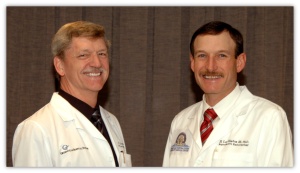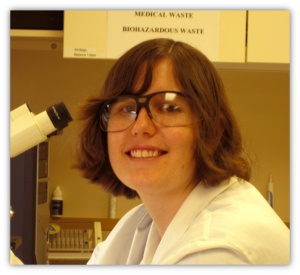As seen in the previous blog post, infertility can lead to unwanted stress and/or depression in an already fragile situation. Recurrent pregnancy loss (RPL) only adds more questions and concerns for couples battling infertility and trying to give birth to a healthy baby. It is important to note that approximately five percent of the population have had two consecutive pregnancy losses. While this is certainly an upsetting situation, in no way does it mean that these couples will never achieve a pregnancy that will result in a healthy birth. There are multiple etiologies of RPL and the typical textbook breakdown is as follows: Infectious (0.5-5%), Genetic (2-5%), Anatomic (10-15%), Endocrine (17-20%), Autoimmune (20%), and Unexplained (40-50%). In the following paragraphs, we will explore these various reasons known to cause RPL and the potential for therapy of each.
Infectious: The role that infections play in RPL is speculative. In fact, the American College of Obstetricians and Gynecologists Practice Bulletin on RPL states that infections are known to cause sporadic pregnancy loss but no infectious agent has been proven to cause recurrent loss. The reason this etiology is speculative is because in order for an infectious agent to be implicated in RPL, it must persist in the genital tract with few, if any, symptoms. Nevertheless, the infectious agents thought to play a role include Toxoplasmosis, Rubella, Cytomegalovirus, Herpes Simplex Virus, and Listeria. The proposed mechanism of action is either by direct infection of the womb and/or embryo or placental problems. Bacterial vaginosis has also been implicated but there are inconsistent reports. It has been suggested by some that perhaps the most prudent approach would be treatment of an infection early in pregnancy if the patient has a history of preterm birth. The bottom line is that population screening for these is not recommended.
Genetic: Normal human development is directed by our genetic make-up. If there is too much or too little genetic information, problems with development occur. When an egg and sperm meet at fertilization, they each bring the respective genetic make-up from the parents-to-be. One can imagine that if there is an imbalance of genetic information, either too much or too little, from one or the other (egg or sperm), the future of that embryo can be compromised. This can occur when either member of the couple has a rearrangement of their genetic code, called a chromosomal translocation. This can be detected by a blood test called a karyotype that looks at the number and structure of a person’s chromosomes. While there is no “fix” for this, in vitro fertilization (IVF) with preimplantation genetic diagnosis (PGD) can offer couples the ability to have embryos that don’t have the genetic translocation be transferred into the uterus in hopes that a successful pregnancy will result in a healthy birth.
Other genetic reasons can include blood disorders, such as sickle cell anemia, or other inherited conditions. In particular would be those inherited conditions such as Marfan’s Syndrome or Ehlers-Danlos Syndrome that may disrupt the integrity of the cervix. As with a translocation, there is no “fix” for these conditions but knowing that the patient has them can allow for the obstetrician to better prepare the patient and hopefully the outcome of the pregnancy.
Anatomic: When we talk about anatomic factors that can lead to RPL we are mainly talking about anatomic factors within the uterus. While development of the uterus typically follows the normal path of one cervical opening with one clear uterine cavity (where a baby grows), there are many variations on the theme. Developmental abnormalities can lead to a uterine septum, unicornuate uterus, bicornuate uterus, or a uterine didelphys. (See picture) A uterine septum is the most common of these and, fortunately, is the one that can be corrected with a relatively simple surgical procedure.

Other uterine factors that can be involved with RPL, and are able to be corrected, include fibroids, polyps, or intrauterine adhesions (called synechiae, or Asherman’s Syndrome). Pelvic ultrasounds can aid in the diagnosis and therefore management of these factors.
Endocrine: The main disorders that fall under this category are polycystic ovarian syndrome (PCOS), thyroid disease, and diabetes. In PCOS, which occurs in approximately 40% of women with RPL, there is often insulin resistance leading to elevated levels of insulin circulating in the blood (hyperinsulinemia). This hyperinsulinemia can not only lead to problems with embryonic development but also embryo implantation which can then result in a failed pregnancy. Much the same can be said for patients with diabetes where it has been shown that poor diabetic control increases the miscarriage rate in the individual. Thyroid disease, hypothyroidism in particular, can also lead to an increased chance of miscarriage. The bottom line is that if you do have any of these conditions, there are simple blood tests that can help your doctor manage you appropriately and therefore optimize your chances for a successful pregnancy.
Autoimmune: This category mainly has to do with clotting disorders that a person can have through autoimmunity, which, simply put, means your body has made antibodies to certain things that can cause an increase in blood clotting to occur (called an acquired thrombophilia). The main antibodies involved, and therefore tested, are lupus anticoagulant and anticardiolipin antibody. While there are others, collectively they are called Antiphospholipid Antibodies, and they play a role in RPL due to their propensity to increase clotting and affecting a number of factors important in embryo implantation and development. Antiphospholipid Antibody Syndrome (APA Syndrome) is a known etiology of pregnancy loss, and depending on your history, can be treated accordingly to best optimize the uterine environment for a pregnancy.
Celiac sprue is also an autoimmune disease that has known implications in RPL. It too can be tested with blood tests, and possibly follow-up biopsy, and if found can be treated with a gluten free diet.
Unexplained: It is a given that couples going through RPL want to have answers, and hopefully solutions, to their problem. Unfortunately, however, there will be a number of couples who fall into the “unexplained” category because even though our current technology is excellent, it is not without limits. There are new avenues of exploration that include immunology at the cellular level and possibly manipulating the balance of certain immunological cell types but any such treatment is yet to come.
As a group, my partners and I feel that a large portion of patients that fall into this “unexplained” category may in fact have endometriosis. It has been shown that those women with endometriosis also have fertility issues and that surgical resection can potentially improve fertility outcomes. However, the only definitive way to diagnose endometriosis is with surgery. A detailed menstrual history can help your gynecologist decide if surgery for potential endometriosis is right for you.
There are also inherited genetic disorders that can lead to increased blood clotting (called congenital thrombophilias) which can lead to RPL and these are collectively called the non-APA Syndrome thrombophilias. Include in this group are Factor V Leiden, Prothrombin Gene mutation, Protein C or S deficiency, Antithrombin III deficiency, and MTHFR mutation. There are blood tests to determine if you have these and, based on your history, you can be treated accordingly in hopes of sustaining a healthy pregnancy.
While RPL is undoubtedly a difficult diagnosis to have, it does not mean that there isn’t hope of delivering a healthy baby in the future. The different etiologies listed above are the most commonly seen, but are certainly not an exhaustive list. If you are in this situation it is important to sit down with your gynecologist or reproductive endocrinologist to explore the different possibilities of treatment.
Creighton E. Likes, III, MD
















